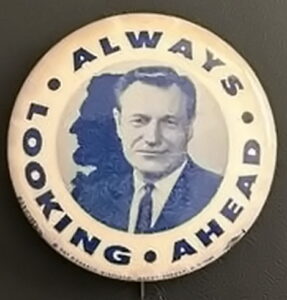
New York has had many famous governors, from DeWitt Clinton to Mario Cuomo. None, however, compares to Nelson Rockefeller, the political and business giant.
Matthew Rosenbaum Political Pins
Political Buttons from America's Past

New York has had many famous governors, from DeWitt Clinton to Mario Cuomo. None, however, compares to Nelson Rockefeller, the political and business giant.
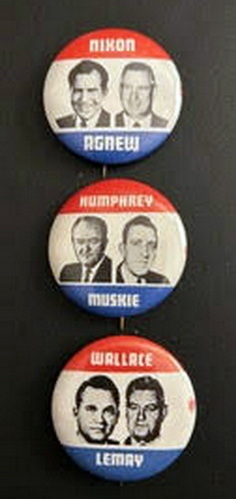
1968 was a turbulent and tragic year in the political arena. Iconic civil rights leader Martin Luther King, Jr. was murdered, and then barely two months later, the presumptive Democratic nominee, Robert Kennedy, was assassinated. We saw three political organizations clash, resulting in the last time a third party received electoral votes in a presidential election. We also witnessed a sitting president, Lyndon Johnson, decline to seek another term.
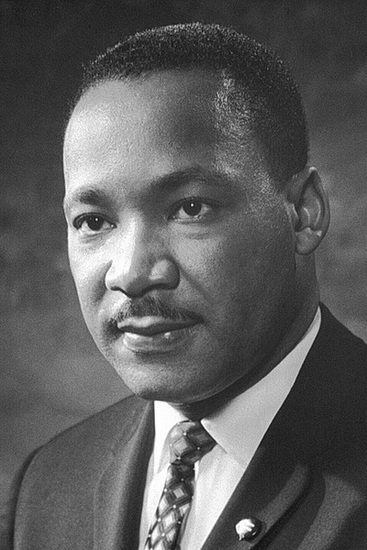
The country was a mess. Anti-Vietnam protests were raging, and the South was enraged by the Civil Rights movement supported by LBJ, a southerner. By the time the Democrats organized for their convention in Chicago, the party’s southern wing bolted to form their own Party, the American Independent Party, as they defiantly opposed the Civil Rights Movement and the end of segregation.
Rioting occurred outside the convention hall while the nominee, Hubert Humphrey, accepted his party’s nomination.
The southern Democrats of the American Independent Party chose Governor George Wallace of Alabama as their standard bearer. They considered Wallace a prominent force supporting their ideology, as Wallace was not subtle regarding his views about race. He was adamantly against racial integration, and during his gubernatorial speech in 1963, he declared, “segregation now, segregation tomorrow, and segregation forever.” Martin Luther King labeled him as the “perhaps most dangerous racist in America today“.
On May 15, 1972, Wallace was shot by Arthur Bremer in Laurel, Maryland. Bremer was a 21-year-old from Milwaukee, Wisconsin. He fired several shots at Wallace and struck him multiple times while he was campaigning for the presidential nomination. Wallace was permanently paralyzed from the waist down and spent the rest of his life in a wheelchair. Three bystanders were also wounded. Bremer was initially sentenced in August 1972 to 63 years in prison, but the sentence was reduced to 53 years after an appeal in September 1972. Bremer is currently out of prison but is under mandatory supervision until May 15, 2025.
The Republicans came together and nominated perennial candidate Richard Nixon. The liberals wanted Nelson Rockefeller of New York, and the Conservatives considered supporting Governor Ronald Reagan of California. In the end, Nixon was nominated and, with the Democrats split, he was elected in November. Wallace won five states over both major parties, helping to hamper Humphrey’s election chances. Nixon won a landslide in 1972, but then Watergate undid him. Humphrey never ran again.
The “civil rights riots” of the 1960s refer to a series of significant outbreaks of civil unrest in urban areas, primarily driven by deep-seated racial injustice and frustrations among the black community. While the Civil Rights Movement is often associated with nonviolent protests, such as those by Martin Luther King, the riots represented another, more volatile, response to the slow pace of change faced by African Americans.
The most significant wave of these riots occurred during the “long, hot summers” of the mid-to-late 1960s, particularly from 1964 to 1969. People would watch these riots unfold on their black-and-white TVs in awe, anger, or support for their cause. They took place in major cities across the country, including:
If racial injustice and violent rioting weren’t enough to make your blood boil (for whatever reason), protests against the Vietnam War were another.
Young people, especially those of college age, who knew they would be drafted soon, started to protest the draft. There were a number of reasons that led up to this.
Baby boomers were not happy with these protests. Many of them served in the military during WWII and found these student demonstrations a copout. People would periodically see on the news about construction workers in NYC and other cities taking offense at them, and on certain occasions, they would assault them.
By 1969, the country had had enough, and President Nixon began withdrawing our troops from the war-torn, bloody country. The final contingent of US troops came back on March 29, 1973.
As 1968 was the most tumultuous year of the decade, it is hard to believe that the following year brought the “Summer of Love.”
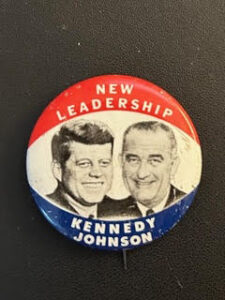
As many know, Kennedy never served out his first term, having been assassinated in November of 1963. But during his term, two other Kennedys came on the scene. Kennedy picked his younger brother Bobby as his US Attorney General.
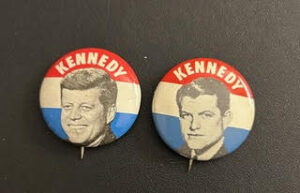
His youngest brother, Teddy, would run for Senate in Massachusetts in 1962, using most of Kennedy’s marketing materials for continuity. Note the nearly identical pins below of JFK and Teddy. RFK ran for NY US Senate in 1964, won, and became the Democrat Presidential favorite in 1968 after LBJ dropped out. RFK, too, would be felled by an assassin’s bullet immediately following his big win in the California primary in June. Only Teddy survived throughout the decades into the 21st Century. Many Democrats lionized the Kennedys, but the family mainly knew nothing but tragedy after tragedy.
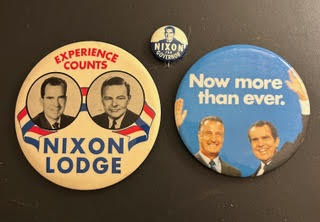
While the 1960s were known politically for the Kennedys, it was, without a doubt, the decade of Nixon as well. In 1960, Vice President Nixon stepped out from President Eisenhower’s shadow and became the Republican Party nominee for President.
He picked UN Ambassador and former Senator Henry Cabot Lodge of Massachusetts as his running mate. Nixon lost that race in a squeaker to JFK. He then lost in his bid to become Governor of California in 1962.
Most people thought Nixon wouldn’t emerge from two massive defeats in two years, but six years later, he took on a bevy of Republican challengers and won the nomination. The Democrats were a split ticket, and Nixon came up the middle to take the prize he so desperately wanted. Only Watergate would undo him another six years later.
Richard Milhous Nixon was the 37th president of the United States (1969–1974) and remains one of the most controversial figures in American history. His presidency had accomplished significant foreign policy achievements, but ended in disgrace with the Watergate scandal.
Born in 1913 in California, Nixon built a political career as a strong anti-communist, serving in Congress and as vice president under Dwight D. Eisenhower (1953–1961). After losing the 1960 presidential election to John F. Kennedy, he made a comeback, winning the presidency in 1968.
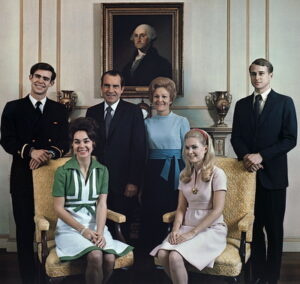
Nixon’s most significant accomplishments were in foreign policy. He improved U.S.-China relations and pursued détente with the Soviet Union, leading to arms control agreements. He also ended U.S. involvement in the Vietnam War through “Vietnamization,” where he implemented a peace through strength policy, withdrawing US troops gradually instead of all at once, as he believed it would make America look weak. Domestically, Nixon established the Environmental Protection Agency (EPA) and enforced school desegregation.
Ironically, the relationship with China is currently taking a turn for the worse, as President Trump is presently in a tariff war with the communist regime. Hopefully, a deal will be worked out, and this bottleneck with China will loosen.
In 1972, operatives linked to his campaign were caught breaking into Democratic offices. Investigations revealed Nixon’s involvement in covering up the crime. Facing impeachment, he resigned on August 8, 1974, becoming the first U.S. president to do so. His successor, Gerald Ford, later pardoned him.
The most talked about scandal of the decade or even century. Nixon approved and attempted to cover up a break-in at the Democratic National Committee headquarters.
He outright lied about the corruption he knew about; specifically, Watergate, illegal wiretaps, and the use of federal agencies against political enemies. This eroded public trust within the American public, which further led to his demise.
Nixon was the only U.S. president to resign from office in order to avoid possible impeachment and removal.
Although Nixon failed due to corruption, he was a die-hard patriotic American, and his time in office led to significant accomplishments.
Opened diplomatic relations with China (1972)
This is one, if not the highest, accomplishment. He essentially erased the tensions of the Cold War and paved the way for modern U.S.-China relations. How can you ignore 1.7 billion people was his rationale.
Detente with the Soviet Union
He signed the SALT I treaty to limit nuclear arms.
Ended American involvement in the Vietnam War
Under enormous political and public pressure, Nixon gradually withdrew U.S. troops and transferred combat to South Vietnamese forces.
Established the Environmental Protection Agency (EPA)
A significant move in federal environmental protection is still in existence to this day.
Desegregated Southern schools
Despite the racial upheaval in the mid-1960s, Nixon made more progress in school desegregation than any previous president.
Despite his achievements, Nixon’s legacy was tarnished by Watergate, which damaged public trust in the government. While his foreign policy shaped global relations, his presidency served as a warning about the consequences of political corruption.